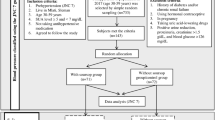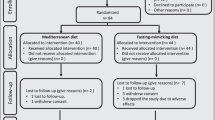Abstract
Flaxseed oil is an excellent source of alpha-linolenic acid ALA known for its antihypertensive action. Flaxseed oil is unstable and its dose is not achievable in our conventional diet hence blending of natural flaxseed oil with palm oil, containing high flavonoids may be a better strategy, to stabilize the blend and provide proper balance of essential fatty acids and potential antioxidant effects. Aim of this study was to access the effect of blended flaxseed oil on 24 h 7-day circadian variations of blood pressure in subjects with essential hypertension. Assessment of CHAT (circadian hyper amplitude tension) using ABPM is the best marker for cardiovascular function. We registered 50 subjects with CAD (Group 1) and 50 subjects with Essential hypertension HT (Group 2) and 52 control subjects with CAD/Hypertension. Group 1 and 2 participant was supplemented with blended flaxseed oil (BFO) (30 ml/day) for the period of 24 weeks, while control group administered available oils sunflower in identical containers, for a follow-up period of 24 weeks. Twenty four hour seven days continuous ambulatory blood pressure monitoring was done initially and after six months of BFO supplementation. There were significant changes noted in lipid profile along with Ambulatory blood pressure parameters like MESOR, ACROPHASE, Hyperbaric Indexes, and CHAT. Circadian hyper amplitude tension (CHAT) incidence decreased after BFO supplementation. Study results suggest that blended flaxseed oil administration can be a potent natural vegetarian antihypertensive supplement which helps in synchronization of cardiac rhythms, and can be used as a preventive treatment of hypertension and as effective vegetarian source of maintaining Omega 3 and omega 6 ratios of essential fatty acids in the body.
This is a preview of subscription content, access via your institution
Access options
Subscribe to this journal
Receive 12 digital issues and online access to articles
$119.00 per year
only $9.92 per issue
Buy this article
- Purchase on Springer Link
- Instant access to full article PDF
Prices may be subject to local taxes which are calculated during checkout




Similar content being viewed by others

References
Bang HO, Dyerberg J, Hjoorne N. The composition of food consumed by Greenland Eskimos. Acta Med Scand. 1976;200:69–73.
Dyerberg J, Bang HO, Stoffersen E, Moncada S, Vane JR. Eicosapentaenoic acid and prevention of thrombosis and atherosclerosis? Lancet. 1978;2:117–9.
Bang HO, Dyerberg J, Sinclair HM. The composition of the Eskimo food in north-western Greenland. Am J Clin Nutr. 1980;33:2657–61.
Wang C, Chung M, Lichtenstein A, Balk E, Kupelnick B, DeVine D, et al. Effects of Omega-3 Fatty Acids on Cardiovascular Disease: Summary. 2004 Mar. In: AHRQ Evidence Report Summaries. Rockville (MD): Agency for Healthcare Research and Quality (US); 1998–2005. 94. Available from: https://www.ncbi.nlm.nih.gov/books/NBK11900/.
Geleijnse JM, Giltay EJ, Grobbee DE, Donders ART, Kok FJ. Blood pressure response to fish oil supplementation: metaregression analysis of randomized trials. J Hypertens. 2002;20:1493–9.
Connor WE. Importance of n-3 fatty acids in health and disease. Am J Clin Nutr. 2000;71:171S–5S.
Kris-Etherton PM, Harris WS, Appel LJ. American Heart Association, Nutrition Committee. Fish consumption, fish oil, omega-3 fatty acids, and cardiovascular disease. Circulation. 2002;106:2747–57.
Ganesan B, Brothersen C, McMahon DJ. Fortification of foods with omega-3 polyunsaturated fatty acids. Crit Rev Food Sci Nutr. 2014;54:98–114. https://doi.org/10.1080/10408398.2011.578221.
Austria JA, Richard MN, Chahine MN. Bioavailability of alpha-linolenic acid in subjects after ingestion of three different forms of flaxseed. J Am Coll Nutr. 2008;27:214–21.
Welch AA, Shrestha SS, Lentjes MAH, Wareham NJ, Khaw KT. Dietary intake and status of n–3 polyunsaturated fatty acids in a population of fish-eating and non-fish-eating meat-eaters, vegetarians, and vegans and the precursor-product ratio of α-linolenic acid to long-chain n–3 polyunsaturated fatty acids: results from the EPIC-Norfolk cohort. Am J Clin Nutr. 2010;92:1040–51.
Burdge GC. Metabolism of alpha-linolenic acid in humans. Prostaglandins Leukot Essent Fatty Acids. 2006;75:161–8. https://doi.org/10.1016/j.plefa.2006.05.013.
London Barry, Albert Christine. Omega-3 fatty acids and cardiac arrhythmias: prior studies and recommendations for future research. Circulation. 2007;116:e320–35.
Caligiuri SP, Rodriguez-Leyva D, Aukema HM, Ravandi A, Weighell W, Guzman R, et al. Dietary flaxseed reduces central aortic blood pressure without cardiac involvement but through changes in plasma oxylipins. Hypertension. 2016;68:1031–8.
Neter JE, Stam BE, Kok FJ, Grobbee DE, Geleijnse JM. Influence of weight reduction on blood pressure a meta-analysis of randomized controlled trials. Hypertension. 2003;42:878–84.
Rodriguez-Leyva D, Weighell W, Edel AL, LaVallee R, Dibrov E, Pinneker R, et al. Potent antihypertensive action of dietary flaxseed in hypertensive patients. Hypertension. 2013;62:1081–9. https://doi.org/10.1161/HYPERTENSIONAHA.113.02094.
Burdge GC, Calder PC. Dietary alpha-linolenic acid and health-related outcomes: a metabolic perspective. Nutr Res Rev. 2006;19:26–52. https://doi.org/10.1079/NRR2005113.
Barceló-Coblijn G, Collison LW, Jolly CA, Murphy EJ. Dietary α-linolenic acid increases brain but not heart and liver docosahexaenoic acid levels. Lipids. 2005;40:787–98.
Wien M, Rajaram S, Oda K, Sabaté J. Decreasing the linoleic acid to α-linolenic acid diet ratio increases eicosapentaenoic acid in erythrocytes in adults. Lipids. 2010;45:683–92.
Ren J, Chung SH. Anti-inflammatory effect of α-linolenic acid and its mode of action through the inhibition of nitric oxide production and inducible nitric oxide synthase gene expression via NF-κB and mitogen-activated protein kinase pathways. J Agric Food Chem. 2007;55:5073–80.
Weldon SM, Mullen AC, Loscher CE, Hurley LA, Roche HM. Docosahexaenoic acid induces an anti-inflammatory profile in lipopolysaccharide-stimulated human THP-1 macrophages more effectively than eicosapentaenoic acid. J Nutr Biochem. 2007;18:250–8.
Pan A, Chen M, Chowdhury R, Wu JH, Sun Q, Campos H, et al. α-Linolenic acid and risk of cardiovascular disease: a systematic review and meta-analysis. Am J Clin Nutr. 2012;96:1262–73.
Caligiuri SP, Aukema HM, Ravandi A, Guzman R, Dibrov E, Pierce GN. Flaxseed consumption reduces blood pressure in patients with hypertension by altering circulating oxylipins via an alpha-linolenic acid-induced inhibition of soluble epoxide hydrolase. Hypertension. 2014;64:53–9.
Cornelissen G, Halberg F. Chronomedicine. In: Armitage P, Colton T, editors. Encyclopedia of biostatistics. vol 1. Chichester, United Kingdom: Wiley; 1998). p. 642–9.
Hermida RC, Mojo´n A, Ferna´ndez JR, Alonso I, Ayala DE. The tolerance hyperbaric test: a chronobiologic approach for improved diagnosis of hypertension. Chronobiol Int. 2002;19:1183–211.
Fisher RA. Statistical methods for research workers. 11th ed. Edinburgh, UK: Oliver and 345 Boyd Ltd; 1950.
Duncan DB. Multiple range and multiple F tests. Biometrics. 1955;11:1–42. https://doi.org/10.2307/3001478.
Koehler F, Okano FK, Elveback LR, Halberg F, Bittner JJ. Periodograms for the study of physiologic daily periodicity in mice and in man. Exp Med Surg. 1956;14:5–30.
Radysh IV. Temporary organization of womans physiological system during adaptation to different factors of environment. Autoreferat 1998;46.
Halberg F, Ahlgren A, Haus E. Circadian systolic and diastolic hyperbaric indices of high school and college students. Chronobiologia. 1984;11:299–309.
Hermida RC, Mojón A, Fernández JR, Ayala D. Computer-based medical system for the computation of blood pressure excess in the diagnosis of hypertension. Biomed Instrum Technol. 1996;30:267–83.
Hoffmann P, Block HU, Beitz J, Taube C, Forster W, Wortha P, et al. Comparative study of the blood pressure effects of four different vegetable fats on young, spontaneously hypertensive rats. Lipids. 1986;21:733–7.
Caligiuri SPB, Edel AL, Aliani M, Pierce GN. Flaxseed for hypertension, implication for blood pressure regulation. Curr Hypertens Rep. 2014;16:499.
Caligiuri SPB, Aukema HM, Ravandi A, Guzman R, Dibrov E, Pierce GN. Flaxseed consumption reduces blood pressure in patients with hypertension by altering circulating oxylipins via an α Linolenic acid induced inhibition of soluble epoxide hydrolase. Hypertension. 2014;64:59–9.
Patenaude A, Rodriguez-Leyva D, Edel AL, Dibrov E, Dupasquier CM, Austria JA, et al. Bioavailability of α-linolenic acid from flaxseed diets as a function of the age of the subject. Eur J Clin Nutr. 2009;63:1123–9.
Austria JA, Richard MN, Chahine MN, Edel AL, Malcolmson LJ, Dupasquier CM, et al. Bioavailability of alpha-linolenic acid in subjects after ingestion of three different forms of flaxseed. J Am Coll Nutr. 2008;27:214–21.
Salonen JT, Salonen R, Ihanainen M, Parviainen M, Seppänen R, Kantola M, et al. Blood pressure, dietary fats, and antioxidants. Am J Clin Nutr. 1988;48:1226–32.
Nunes DO, Almenara CCP, Broseghini-Filho GB. Flaxseed oil increases aortic reactivity to phenylephrine through reactive oxygen species and the cyclooxygenase-2 pathway in rats. Lipids Health Dis. 2014;13:107. https://doi.org/10.1186/1476-511X-13-107.
Rupp H, Turcani M, Ohkubo T, Maisch B, Brilla CG. Dietary linolenic acidmediated increase in vascular prostacyclin formation. Mol Cell Biochem. 1996;162:59–64.
DeCaterina R, Giannessi D, Mazzone A, Bernini W, Lazzerini G, Maffei S, et al. Vascular prostacyclin is increased in patients ingesting omega-3 polyunsaturated fatty acids before coronary artery bypass graft surgery. Circulation. 1990;82:428–38.
Kinsella J, Lokesh B, Stone R. Dietary n-3 polyunsaturated fatty acids and amelioration of cardiovascular disease: possible mechanisms. Am J Clin Nutr. 1990;52:1–28.
Lugo R. Antihypertensive effects of dietary flaxseed. School of Physician Assistant Studies; 2014. Paper 467. http://commons.pacificu.edu/pa/467.
Goyal A, Sharma V, Upadhyay N, Gill S, Sihag M. Flax and flaxseed oil: an ancient medicine and modern functional food. J Food Sci Technol. 2014;51:1633–53. https://doi.org/10.1007/s13197-013-1247-9.
Acknowledgements
We thank Abdul Kalam Technological University to provide us technical support and King George’s Medical University for research and academic support.
Author information
Authors and Affiliations
Corresponding author
Ethics declarations
Conflict of interest
The authors declare no competing interests.
Ethical approval
All procedures performed in studies involving human participants were in accordance with the ethical standards of the KGMU Institutional Committee of Medical Ethics, Research Cell KGMU (5128/R.Cell-2016), Lucknow in compliance with the Declaration of Helsinki principles of medical ethics.
Additional information
Publisher’s note Springer Nature remains neutral with regard to jurisdictional claims in published maps and institutional affiliations.
Rights and permissions
About this article
Cite this article
Bhardwaj, K., Verma, N., Trivedi, R. et al. Effect of essential fatty acid blend on circadian variations of ambulatory blood pressure in patients with essential hypertension and coronary artery disease risk markers. J Hum Hypertens 36, 289–298 (2022). https://doi.org/10.1038/s41371-021-00520-9
Received:
Revised:
Accepted:
Published:
Issue Date:
DOI: https://doi.org/10.1038/s41371-021-00520-9


